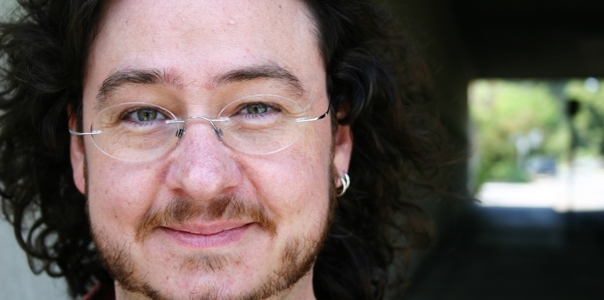GDC Online: The Evolution of Game Narrative
In an exclusive interview, storytelling veterans Tom Abernathy and Richard Dansky talk about the upcoming Game Narrative Summit, stories in online gaming and how narrative is evolving.

Next month sees the return of GDC Online, the Games Developers Conference focused on online, social and cloud gaming. One of the most popular parts of this annual gathering is the Game Narrative Summit — a series of lectures and workshops about how to share storytelling in all its forms, from flagship MMOs to small smartphone games.
Helping shape this year’s Summit are Tom Abernathy, Narrative Designer and Writer at Microsoft Studios, and Richard Dansky, Central Clancy Writer for Red Storm Entertainment. Abernathy has previously worked on Halo: Reach, Destroy All Humans and Crimson Alliance, while Dansky’s credits include Splinter Cell, Ghost Recon and Far Cry. Both were listed in Gamasutra’s Top 20 Game Writers, and together they form half of the Game Narrative Summit Advisory Committee.
With the conference itself just a few weeks away, I was fortunate enough to get the chance to talk about game narrative with these legends of storytelling. In an enlightening dialogue, we discussed the diverse nature of this year’s Summit, before moving on to the evolving nature of narrative in a changing industry. I also discovered the techniques used in building narrative for online games, and how new technology is being used to perform storytelling.

Tom Abernathy, Microsoft Studios
The lineup of sessions at this year’s Games Narrative Summit is particularly diverse. As Abernathy explained, “This year we got a lot more submissions from people working in social and casual games. That was interesting and exciting, and obviously reflects some of the directions the industry has been going in for the last couple of years. We’re pretty excited about it, because the challenge of doing anything even vaguely narratively oriented in that sort of space is rather enormous. To this point, I don’t think anybody particularly has tried really hard, at least not with a huge amount of success, so we’re looking forward to several sessions that are going to be dealing with that set of challenges.”
It’s not just social gaming that’s featuring this year, with Abernathy quick to highlight a presentation that’s likely to be very popular. “We’ve been getting a little more into the challenges of doing narrative in the MMO space, and we’re going to have some more content this year. Bobby Stein and Angel Leigh McCoy from ArenaNet are going to be talking about Guild Wars 2, for example.”
That doesn’t mean that game narrative is abandoning its roots altogether, with Abernathy adding “We’re still going to have a fair amount of content that deals with making traditional triple-A console games, but I think what that means is that, in a lot of ways, we’ve got more diverse content in terms of the kinds of games people are trying to do narrative for, maybe than we’ve ever had before.” Abernathy’s own session is on the delicate subject of sequels and reboots.
Is it possible to tie narrative down to a single theme or concept? Dansky doesn’t seem to think so, but reckons that this is actually a good thing. “To be blunt, trying to say what narrative is in games is kind of a fool’s errand, because it is such a broadly diverse topic. The wonderful thing about this conference is that it brings that community across that spectrum of working game writers and game narrative professionals together.”
Dansky went on to demonstrate this diversity, using a couple of the Summit sessions as an example. “We’ve got the really nitty-gritty detailed stuff like my workshop, which is a hands on ‘here’s how you do critique of your own work’, to some theoretical work like Clara’s talk coming out of MIT.” Clara Fernandez Vara, Postdoctoral Researcher at MIT, will be presenting a lecture on Environmental Storytelling at the Summit.

Richard Dansky, Red Storm Entertainment
Taking Narrative Online
There’s a strong tradition of story-rich single player games, from role-playing to puzzlers and shooters. With many of these games now incorporating online modes or turning massively multiplayer, would narrative writers need to change their approach? For Abernathy, it’s much more about building frameworks than plotlines. “As a friend of mine who works for Riot likes to say, a lot of online games are almost more like sports than they are traditional video games.”
“At its most fundamental level, what we do is simply create context for gameplay.” Using a basketball game as an analogy, Abernathy continued by describing how a game designer would define the feel of the game, coming up with mechanics for dribbling the ball and shooting hoops. “We want to build the basketball court, and then the players come and they play basketball.” The narrative would then augment gameplay, from announcers describing play to the cheer of fans in the stadium. “One of the areas that you end up focusing on is the characters involved, making them as rich, interesting and diverse as you can.”
It’s easy to be concerned about the gaps in narrative that the framework doesn’t cover, but Abernathy stressed that it’s actually a good thing to give players empty space. “One thing that a lot of people who work in those games have found out, is that, even though there’s a ton of negative space left there narratively, the players, if they get into the game enough, will start filling that in themselves.” Whole communities have emerged from players creating and sharing their own narrative, from role-play forums to fan-fiction archives.
Dansky had a similar experience, drawing from his days working on the White Wolf series. “When you’re building a tabletop world, you’re creating a bunch of tools for the GM and the players to pick up and run with. While the technical limitations of an MMO are slightly more constraining than a GM’s pizza-fuelled imagination, the same sort of principle applies.” He later added that “I actually found the LARP (Live Acton Role Play) work that I did for White Wolf, when I was in charge of Vampire LARP, very applicable to a lot of what I’ve seen in terms of developing narrative for the online space.”
It’s likely that we’ll see fewer intricately detailed stories in the future, with Dansky explaining that they’re not suitable for every game. “I think there’s a sort of misapprehension out there that when you say narrative you automatically mean a very detailed, very intense, very asset-heavy story with a very tight constraint. You can do a very loose framework that provides people with enough of an immersion that they can go off and do their own thing — that’s perfectly appropriate for a game.”
Abernathy agreed. “A lot of times, you say the word story and people assume you mean plot. In fact, I think plot is the least important part of game narrative by far, because the user story is the plot. What you want do is put all the elements in to let the user create that story in the way that they want to do it.” He continued further. “The story is so intertwined with what the player story is at any given moment — that’s what matters the most. It’s not our job to try to try and cram War and Peace onto people in a context where that’s not appropriate. What it is our job to do is establish a context in terms of motivations, goals, relationships and character where that’s possible, so that people are as immersed as possible in the moment of the activity that they’re pursuing.”
Evolving the Narrative
I asked Dansky and Abernathy about the direction game narrative was heading in, and both were excited by the potential that new technology has enabled. By way of explanation, Dansky gave me a quick comparison. “I can tell you about games where I wrote ten thousand lines of dialogue in an excel spreadsheet, and exactly how much blood was jutting out of my eyes by the time that was done. You’ll compare it to the tools that I have at my disposal now, and it’s like chipping into a clay tablet with a chisel. “
Abernathy described how improvements in art, animation and gameplay mechanics have also created alternative ways to share narrative with the players. “You start really having to get creative about ways you can supply context without getting in the way of the essential part of the experience, which is gameplay. I think working closely with art is a really important because, as we’ve seen with Portal and BioShock, there’s so much you can do in terms of visual and environmental storytelling, if the artists are doing some of the heavy lifting for you. It doesn’t have to be dialogue, it doesn’t have to be cutscenes —there are a lot of ways that you can get information to the player that has nothing to do with what you’re used to seeing in a movie.”
Dansky also chimed in with his own experiences. “If you dig into my back catalogue, you’ll see my secret shame of giant walls of text that we used to do for mission briefings. At the time that was the best technique we had for getting that information to the player, it was cutting edge, it was how we could get you what you needed to advance the narrative, and do your mission, and whatever else. As someone who’s actively working in the field, I love the fact that the possibilities for storytelling have exploded with the technological advances.”
There’s a strong demand for rich, immersive experiences, as Abernathy knows. “I think that the marketplace craves narrative context, to a greater degree, sometimes, than people in the industry actually recognize and are prepared to give them.” Dansky went on to explain how he believes that narrative design is just one part of a wider machine, and why strong collaboration is vital. “We are a discipline of game development. We are all pulling toward making the player experience together. And the folks who see story or narrative in opposition to gameplay are really, I think, missing the point. Thankfully, the industry is evolving to where it’s understood to be part of what we’re giving the player.”
Looking back on both their careers as writers and designers, game narrative has changed radically from its beginnings. “Walking away from the preconception that game narrative is only about space marines, who also happen to be elves, who also happen to be soldiers shooting people in the face, and that’s the only narrative you’re going to see in games — that’s a great advance for us.” Dansky explained. “The broader the source of narratives that we can make games about, the more interesting the games are going to be.”
It doesn’t end there, as Dansky hopes for the day when labels like ‘MMO’, ‘Shooter’ or ‘RPG’ are no longer the defining feature of a game. “I’d love to get to a place where we can start defining what we’re doing by what’s in the game as well as how you play it.”
Gareth “Gazimoff” Harmer, Staff Writer